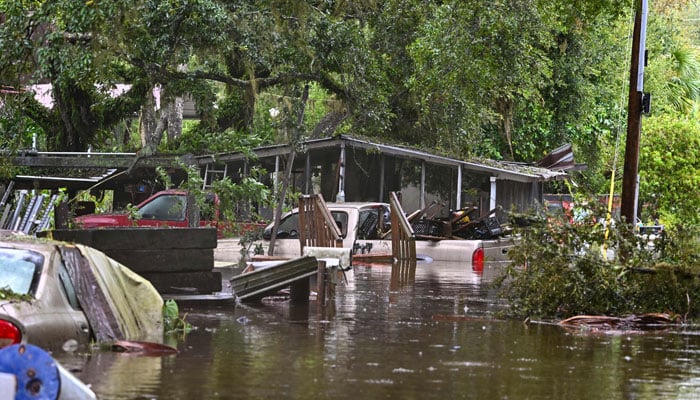Idalia charged into Florida, a potent hurricane that unleashed a fierce assault on Wednesday.
The storm triggered dangerous storm surges along the coastline and left thousands without power, marking its relentless path through the southeastern United States. Now, as it advances into Georgia, Idalia has transformed into a tropical storm, still drenching the region with heavy rainfall and prompting concerns about rising waters.
Having hit the area of northwest Florida most intensely affected, officials deemed Idalia and its life-threatening high waters a rare event for the region. The hurricane’s Category 3 force upon its early morning landfall near Keaton Beach led to surging waters and gusts reaching 125 mph (201 kph), causing widespread flooding and power outages.
Despite the absence of confirmed deaths, Florida Governor Ron DeSantis remained cautious, acknowledging the potential for the situation to change due to the magnitude of the storm. While first responders and search and rescue teams worked to assist, obstructions like fallen trees and high water slowed their access to remote locations.
As Idalia entered Georgia, it diminished to a Category 1 hurricane and subsequently downgraded to a tropical storm with winds at 70 mph. However, the threat persisted, and the risk of high tide was evident. Water levels surged above six feet in Cedar Key, exacerbating the already perilous situation. Coastal waters were rising rapidly, prompting concerns over potential flooding.
Mass evacuations were carried out in anticipation of Idalia’s arrival, although some residents opted to remain in defiance of evacuation orders. Perry, a small town in the storm’s path, suffered substantial damage, with fallen trees and debris littering the streets. Despite the challenges, resilience shone through as residents assessed the aftermath and began cleanup efforts.
Tampa Bay area faced submerged streets and yards, while Tarpon Springs saw residents using canoes to navigate the inundated terrain. Idalia’s accelerated pace stood out, moving faster than previously devastating hurricanes, and emphasised the need for prompt warnings and evacuations.
Power outages were widespread, affecting around 250,000 customers in Florida and 230,000 in Georgia. The storm’s glancing impact on Cuba and its journey over the Gulf of Mexico, fueled by a marine heat wave, amplified its force.
These conditions, linked to human-caused climate change, are projected to intensify Atlantic storms this season, making swift evacuation and safety measures paramount.
Though some Floridians felt fortunate for the storm’s reduced ferocity, President Joe Biden and officials stressed the ongoing impact and urged vigilance. As recovery efforts began, Tampa International Airport reopened, signifying a step towards resuming normalcy.
The challenges posed by Hurricane Idalia remind us of the importance of preparedness and collective effort in the face of such natural disasters.



Comments are closed.